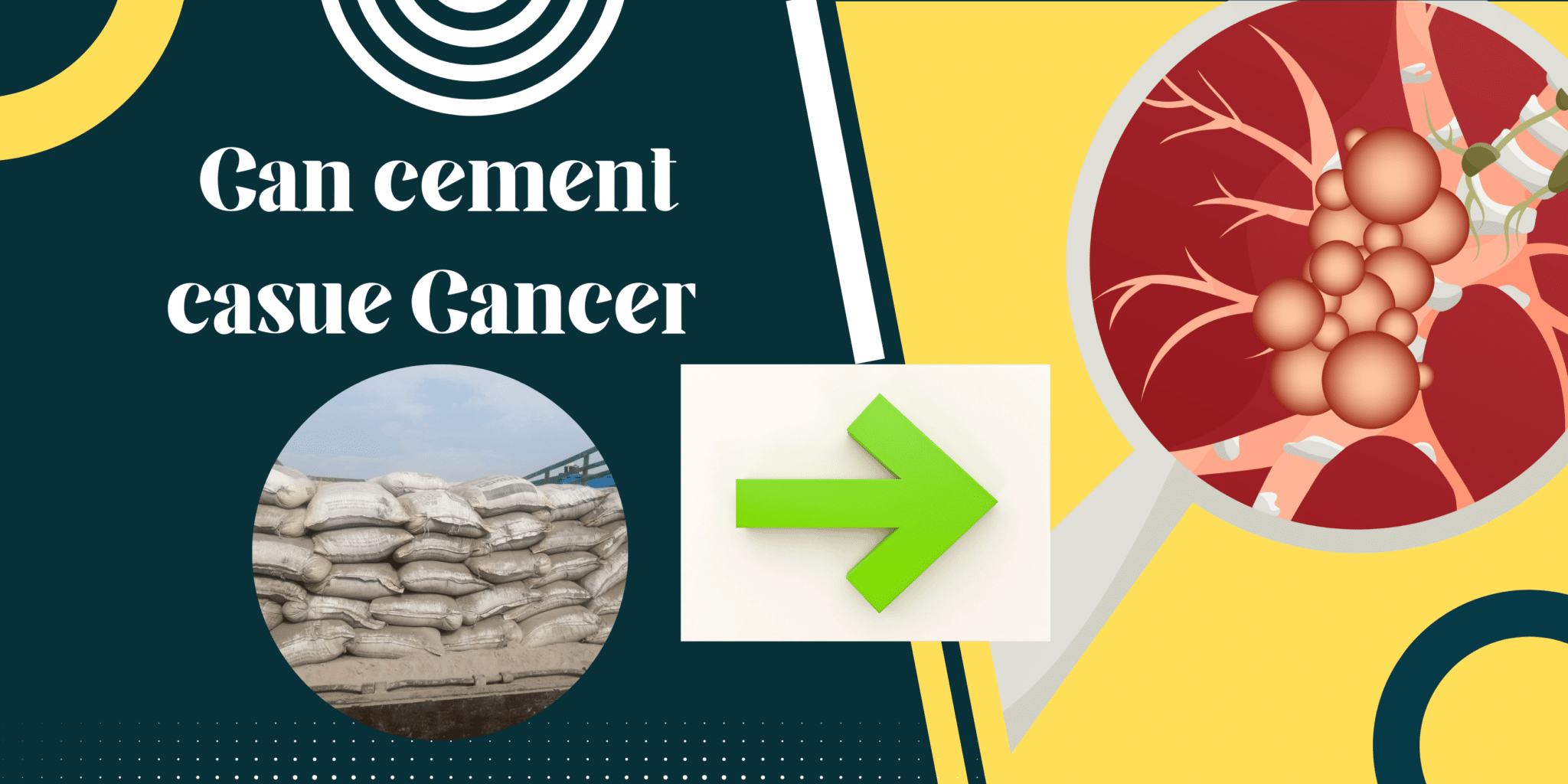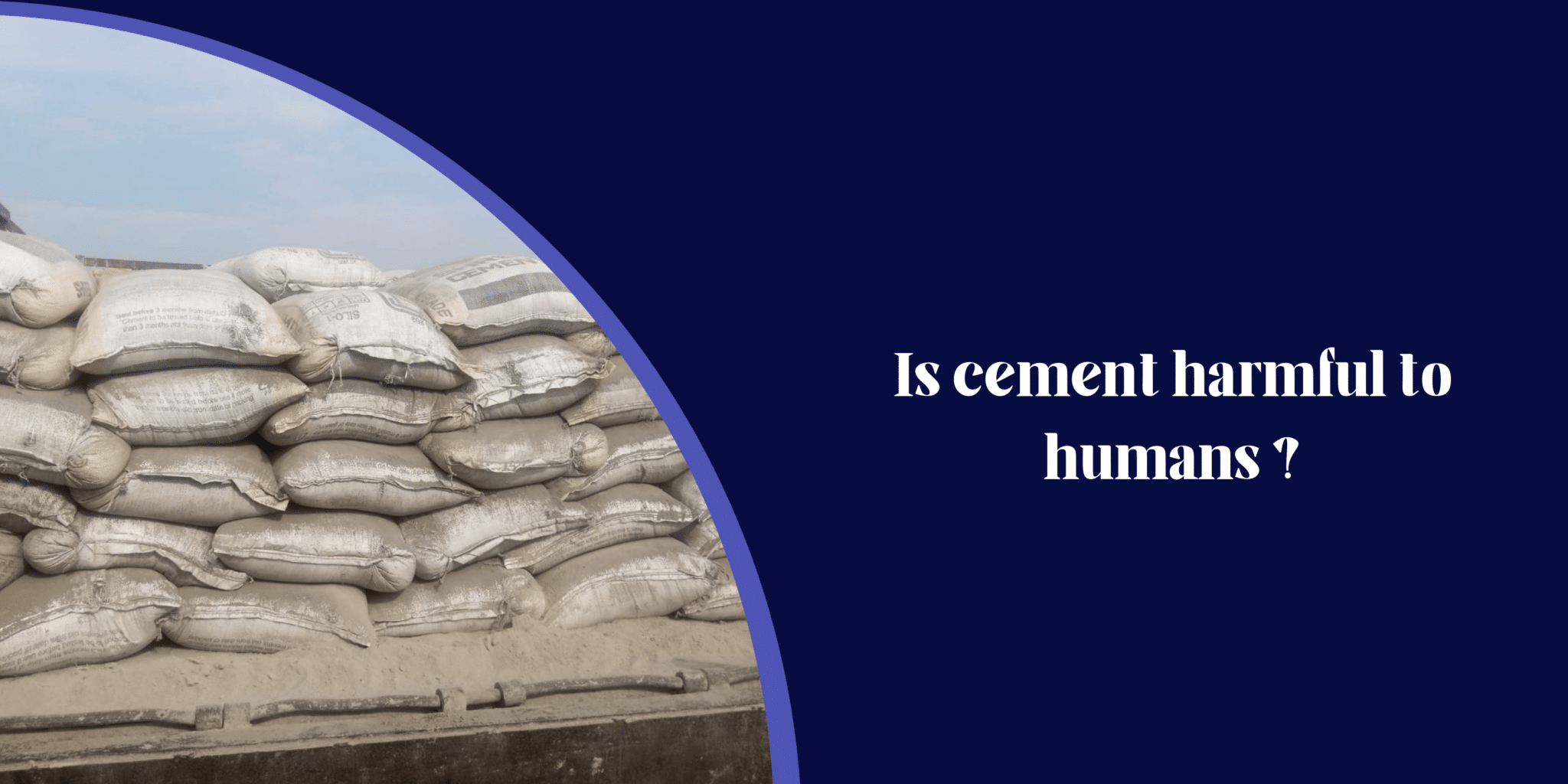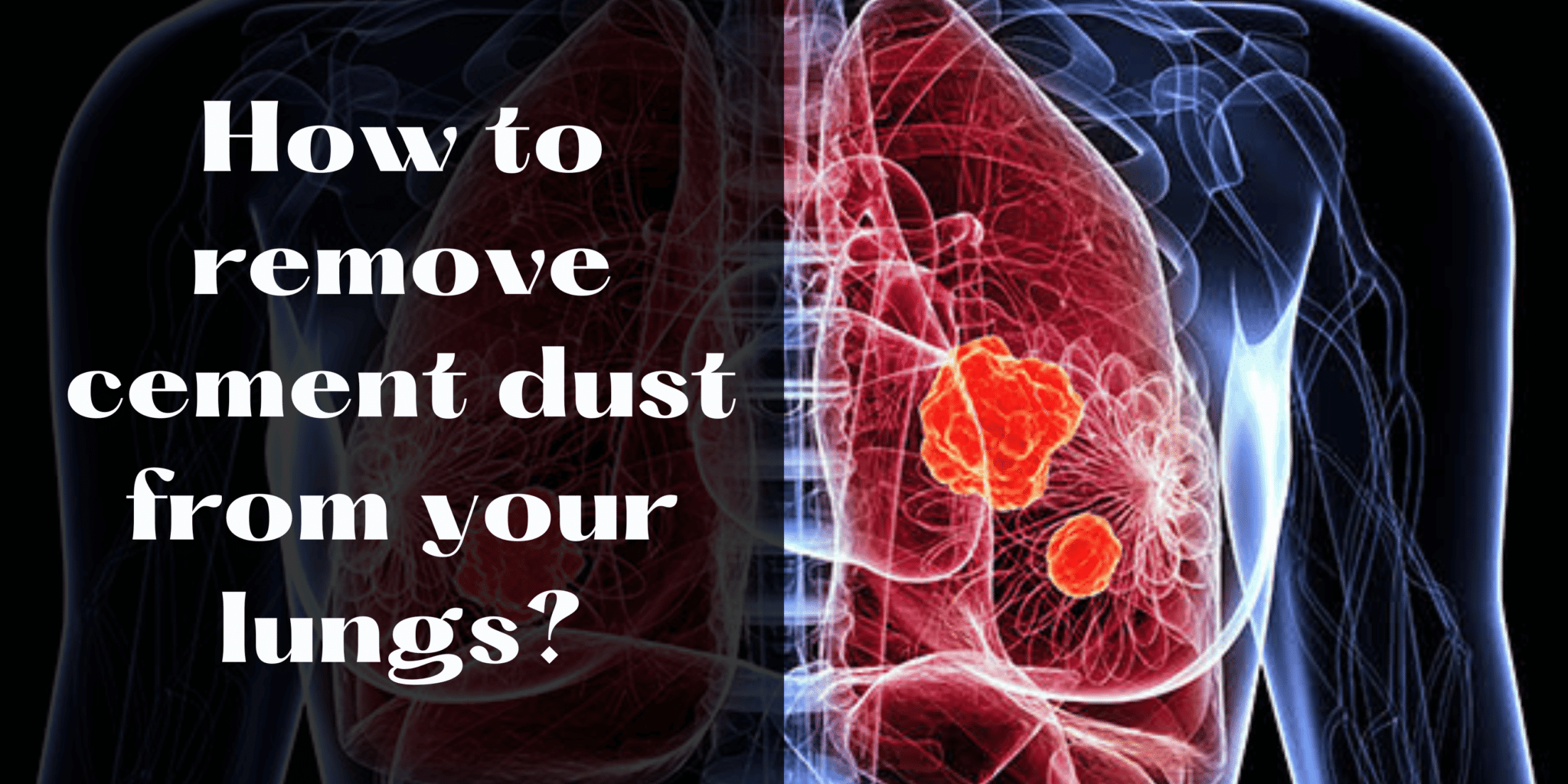can cement cause cancer?
While cement itself is not thought to be carcinogenic, certain of its constituent elements as well as the dust that is created during its usage and handling might be hazardous to human health if sufficient safety measures are not followed. Can cement cause cancer is an important question nowadays.
Silica, which may be found in crystalline and amorphous forms, is one of the main ingredients of cement. Cement often contains crystalline silica, a material with a history of being linked to human cancer.
It is crucial to use the proper safety gear, such as breathing helmets and goggles, and to follow safe disposal and handling methods to decrease the danger of exposure to silica dust. Also, companies must train and educate staff members on the dangers of crystalline silica and how to handle cement and other silica-containing products properly.
Is cement harmful to humans?
If the right safety procedures are not performed while using and handling cement, it might be dangerous to people. The posofiexpose tox to the posture of crystalline silica, which may result in respiratory issues including silicosis and lung cancer, is one of the primary issues with cement.
By cutting, grinding, or drilling cement or other silica-containing materials, one may be exposed to silica dust. The discomfort, cough, and breathlessness that might result from inhaling this dust can become worse with continued exposure.
In addition to the possible health risks from silica dust, skin contact with cement may also result in chemical burns and skin irritation. If cement dust or particles enter the eyes, it may potentially cause eye discomfort and damage.
While dealing with cement, it’s crucial to adhere to the proper safety staorderablereduce any possible health concerns. This could include utilizing the correct respiratory protection, such as respirators, and safety glasses, as well as adhering to handling and disposal guidelines. Also, employers must teach staff about the risks associated with cement and how to use it properly.
Can exposure to cement cause cancer?
The exposure to cement itself is not considered a significant cancer-causing factor. Nevertheless, if necessary measures are not followed, various cement components and the dust that is created during its handling and usage may constitute a health concern.
Cutting, drilling, or grinding concrete or other materials that contain silica may expose workers to crystalline silica dust. Long-term and recurrent exposure to silica dust may raise the risk of lung cancer and other respiratory conditions including silicosis.
While working with cement, it’s crucial to adhere to the proper safety precautions to reduce your chance of exposure to crystalline silica and other possible health risks.
This could include utilizing the proper personal protective equipment, such as respirators, and safety glasses, as well as adhering to handling and disposal guidelines. Also, employers must educate staff members on the dangers of silica dust and how to handle cement and other silica-containing products properly.
Is cement toxic to the skin?
If the skin comes into intimate and continuous contact with cement, it may be harmful to the skin. Alkaline substances included in cement may give certain individuals allergic reactions, skin rashes, and chemical burns.
Redness, itching, and burning are among the signs of skin contact to cement that are most often seen. In more extreme instances, the skin may swell up, hurt, or even get infected with open sores or ulcers. The alkaline chemicals in cement are to blame for these symptoms since they may upset the skin’s normal pH balance and result in chemical burns.
While handling cement, it’s crucial to put on the proper personal protection equipment, such as gloves and long sleeves, to reduce the danger of skin exposure. If cement gets on the skin, it has to be removed right away with soap and water. Medical assistance should be sought if symptoms such as persistent skin irritation or other symptoms.
While dealing with cement, it’s also critical to follow proper handling and disposal methods to avoid skin contact and other possible health risks.
What diseases are caused by cement dust?
Many respiratory issues, including acute and long-term impacts, may be brought on by exposure to cement dust. Cement dust may lead to several illnesses, including:
A persistent lung condition known as silicosis is brought on by breathing in crystalline silica dust. Scarring of the lung tissue may result, which may cause breathlessness, coughing, and chest discomfort. The chance of acquiring other respiratory illnesses including lung cancer and TB is also increased by silicosis.
Exposure to several air pollutants, especially cement dust, may lead to a chronic respiratory condition known as a chronic obstructive pulmonary disease (COPD). It may develop into additional health issues including coughing, wheezing, and tightness in the chest as well as a narrowing of the airways that makes breathing difficult.
Chronic or acute bronchitis, an inflammation of the bronchial tubes in the lungs, may also be brought on by exposure to cement dust. The signs of bronchitis include coughing, chest pain, and breathing difficulties.
It is crucial to adhere to the proper safety practices while dealing with cement dust to reduce the danger of respiratory issues. This could include utilizing the correct respiratory protection, such as respirators, and safety glasses, as well as adhering to handling and disposal guidelines. Also, employers must educate staff members on the dangers of cement dust and how to handle it properly.
How toxic is wet cement?
Ingestion, inhalation, or skin or eye contact with wet cement may all result in hazardous effects. Calcium hydroxide, which is very alkaline and may lead to chemical burns and skin irritation, is created when cement and water are combined chemically.
Wet cement has a pH between 12 and 13, which is very alkaline and may be quite irritating to the skin and eyes. Chemical burns from direct contact with wet cement may be unpleasant and take a long time to cure. If wet cement gets in the eyes, it may seriously irritate them, make them red, and even impair their eyesight.
As wet cement is mixed, poured, or transported, it may also release dust particles into the air that can be breathed and result in respiratory issues including coughing, wheezing, and shortness of breath.
This is particularly true if the cement includes crystalline silica, which, when breathed over an extended length of time, may result in lung cancer and other respiratory illnesses.
While handling and working with wet cement, it’s crucial to adhere to the proper safety tools to reduce any possible health concerns. This could include utilizing the proper personal protective equipment, such as respirators, and safety glasses, as well as adhering to handling and disposal guidelines. Also, employers must educate staff members on the dangers of wet cement and how to handle it properly.
How do you remove cement dust from your lungs?
It’s critical to get medical assistance right away if you believe you may have breathed cement dust and are having respiratory issues. The following are some procedures doctors could use to get cement dust out of your lungs:
Bronchial lavage: A bronchial lavage is a medical technique in which a saline solution is used to clear the airways. This may aid in clearing the lungs of material such as cement dust.
Oxygen therapy: This treatment may help with breathing and raise blood oxygen levels. This may lessen the chance of consequences from breathing in cement dust, such as hypoxia (low oxygen levels).
Medications for the respiratory system: To enhance breathing and decrease airway inflammation, bronchodilators, and corticosteroids may be administered.
Relaxation and hydration: These two factors are crucial for fostering lung function and supporting the body’s natural healing process.
While working with cement, it’s crucial to take the proper safety precautions to avoid inhaling cement dust. This could include utilizing the proper personal protective equipment, such as respirators, and safety glasses, as well as adhering to handling and disposal guidelines. Also, employers must educate staff members on the dangers of cement dust and how to handle it properly.
How do you protect yourself from cement dust?
You should take the following actions to protect yourself against cement dust:
Use the proper personal protection gear, which should include a respirator, goggles or face shields, gloves, and coveralls. To prevent dust inhalation, be careful to choose the appropriate kind of mask for the task and make sure it fits comfortably.
Employ engineering controls: To collect and remove dust from the air, use ventilation systems like exhaust fans or dust collectors. Wet down the work area if you can to cut down on dust emissions.
Avoid blowing with compressed air or dry sweeping since these activities may produce dust clouds and raise the risk of inhalation. Use wet techniques instead, including wet sweeping or HEPA-filtered vacuuming.
Maintain proper hygiene by routinely washing your hands and face, particularly before consuming anything edible or caffeinated. After working with cement dust, take a shower and change into clean clothing to get rid of any leftover dust.
Keep yourself aware of the risks of exposure to cement dust and observe proper handling and disposal practices.
See a specialist if you have respiratory issues: If you suffer symptoms like coughing, wheezing, shortness of breath, or pressure in your chest, consult a medical professional immediately.
Workers who could be exposed to cement dust must get the necessary training and personal protective equipment from their employers. To reduce the danger of exposure to employees and the community at large, they must also adhere to proper handling and disposal protocols.
What are the symptoms of cement dust?
Many symptoms might result from exposure to cement dust, depending on how severe and long the exposure was. These are a few of the typical signs and symptoms of exposure to cement dust:
- Coughing
- Wheezing
- breathing difficulty
- chest discomfort or stiffness
- runny or congested nose
- unwell throat
- Redness or irritated eyes
- Skin rash or irritation
- cold or fever
- weakness or weariness
When exposed to cement dust for an extended period or repeatedly, one may develop more severe health issues such as silicosis, lung cancer, and chronic obstructive pulmonary disease (COPD). More serious symptoms, such as chronic cough, breathing problems, and chest discomfort, may be brought on by these illnesses.
It is crucial to seek medical assistance right away if you notice any of these symptoms and think that exposure to cement dust may be to blame. Early detection and intervention may speed up recovery and help avoid further issues.
How long does cement dust stay in the air?
The quantity and size of cement dust particles, the humidity level, and the existence of ventilation or air movement are only a few of the variables that affect how long cement dust remains in the air.
Smaller cement dust particles may stay in the air for extended periods, but bigger, heavier cement dust particles often descend more rapidly. The bulk of cement dust particles, according to the Occupational Safety and Health Administration (OSHA), is bigger than 10 microns, and they typically settle a few minutes to a few hours after being formed. Yet, certain tiny particles, especially in places with inadequate ventilation, may linger in the air for many hours or even days.
It is crucial to implement the necessary safety precautions, including employing ventilation systems, using breathing masks, and adhering to proper handling and disposal protocols, to reduce the danger of exposure to cement dust. Also, to lessen dust emissions and stop airborne cement dust particles from spreading, it is advised to dampen down the work area and utilize wet techniques, such as wet sweeping or vacuuming with a HEPA filter.
Conclusion
In conclusion, there is less evidence to support the hypothesis that being exposed to cement dust increases the chance of developing specific cancers, including lung and mesothelioma. In contrast to other health risks linked to exposure to cement dust, such as respiratory issues and skin irritation, the risk of cancer is usually seen as minimal.
It is crucial to adhere to the necessary safety precautions, like as wearing personal protection equipment, maintaining excellent hygiene, and following safe handling and disposal methods, to reduce the risk of health issues brought on by exposure to cement dust. Also, companies must provide employees who could be exposed to cement dust with the right training, personal protection equipment, and safe working conditions.
It is advised to get additional guidance and advice from a medical practitioner or occupational health expert if you are worried about possible health hazards linked to exposure to cement dust.
FAQs
Ques: Can cancer be caused by cement?
Ans: There is just a little evidence to support the idea that being exposed to cement dust may make certain cancers more likely.
Ques: Which cancers are linked to exposure to cement dust?
Ans: Among the malignancies associated with exposure to cement dust include mesothelioma and lung cancer.
Ques: How is exposure to cement dust caused?
Ans: Inhalation or skin contact with cement dust may happen when handling and preparing cement.
Ques: What signs of exposure to cement dust are there?
Ans: Coughing, wheezing, shortness of breath, tightness in the chest, skin irritation, and eye irritation are all signs of exposure to cement dust.
Ques: How can exposure to cement dust be avoided?
Ans: By utilizing the proper personal protective equipment, maintaining excellent hygiene, and adhering to safe handling and disposal protocols, cement dust exposure may be avoided.
Ques: Is exposure to cement dust ever safe?
Ans: Every material that causes cancer has no safe exposure limit, including cement dust. Nonetheless, compared to other health risks, it is widely believed that exposure to cement dust has a modest chance of developing cancer.
Ques: What role do employers play in limiting exposure to cement dust?
Ans: Workers who could be exposed to cement dust must get the proper training, personal protection equipment, and safe working conditions from their employers.
Ques: Does exposure to cement dust result in health issues other than cancer?
Ans: Certainly, breathing in cement dust may lead to irritated skin, respiratory troubles, and other health concerns.
Ques: Does wet cement pose fewer risks than dry cement?
Ans: Given that it is less prone to generate dust particles, wet cement may be less dangerous than dry cement. Wet cement, however, may potentially burn your skin and irritate your skin.
Ques: What should I do if I’m worried about breathing in cement dust?
Ans: It is advised to get additional guidance and advice from a medical practitioner or occupational health expert if you are worried about possible health hazards linked to exposure to cement dust.




